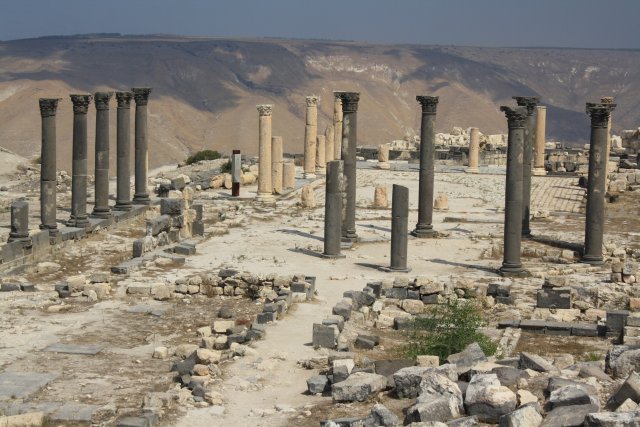
You might not think of Hercules when you think of Jordan. However, Hercules once stood atop the Citadel Hill in Jordan’s capital, Amman, during the Roman times. All that’s left of the once giant statue is little more than a piece of the hand, but that is enough to imagine the statue‘s former grandeur. Walking through the Stone Age, Roman, Byzantine and Muslim ruins, it is easy to see why this hill was occupied throughout Jordan’s history. The fantastic view reveals the seven hills of Amman and all its sprawling glory.
This city was my first introduction into Jordanian culture. Already, I have been amazed by the amount of archeological ruins that have survived the centuries. In Umm Qais (located in northern Jordan), the Roman city had been so well-preserved that the chariot dents into the stone streets were still present. This preserved archeological site featured rows of standing columns, shops from Roman streets and a view of Syria and Israel. The Golan Heights glowed next to the Sea of Galilee located in the valley below Umm Qais.
Nearby, Jerash is another Roman city which has even more remarkable remains, including a chariot racing arena, main street, Temple of Artemis and a large theater with seats so high, it almost made me dizzy to look straight down at the stage.
Even more moving is learning about the modern Jordanian life. Religion plays a huge part of the culture, which I have explored with a Baptist service, Melkite Catholic mass and a tour of a enormous Mosque whose dome covered the entire interior of the structure. The most inspiring part is the religious peace and tolerance that Jordan has maintained despite it’s location in a sometimes violent Middle East. One can only hope that other Middle Eastern countries can learn by their example in interfaith coexistence.

Umm Qais with the Golon Heights in the backdrop

Mosque in Amman

Jerash ruins









